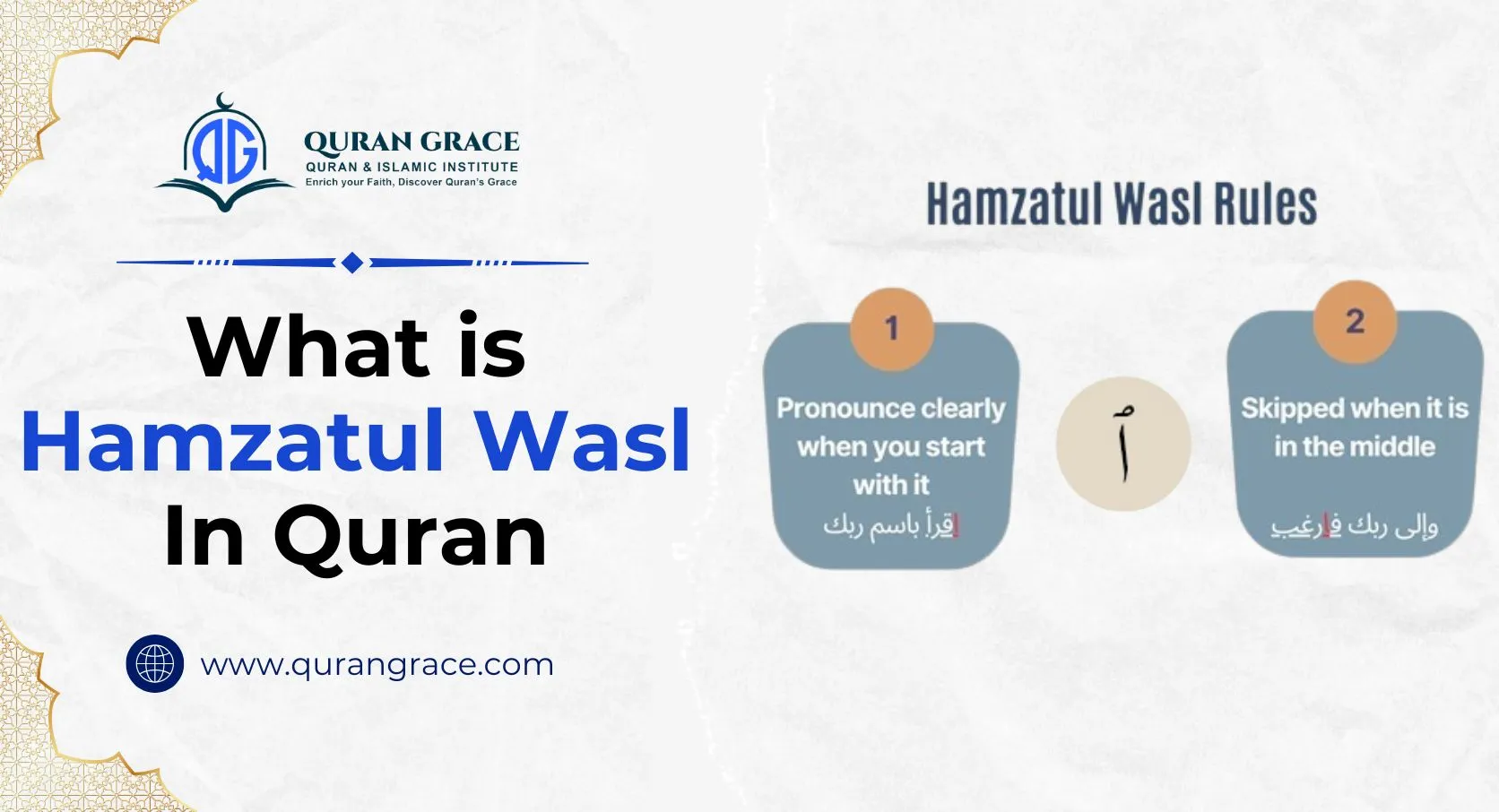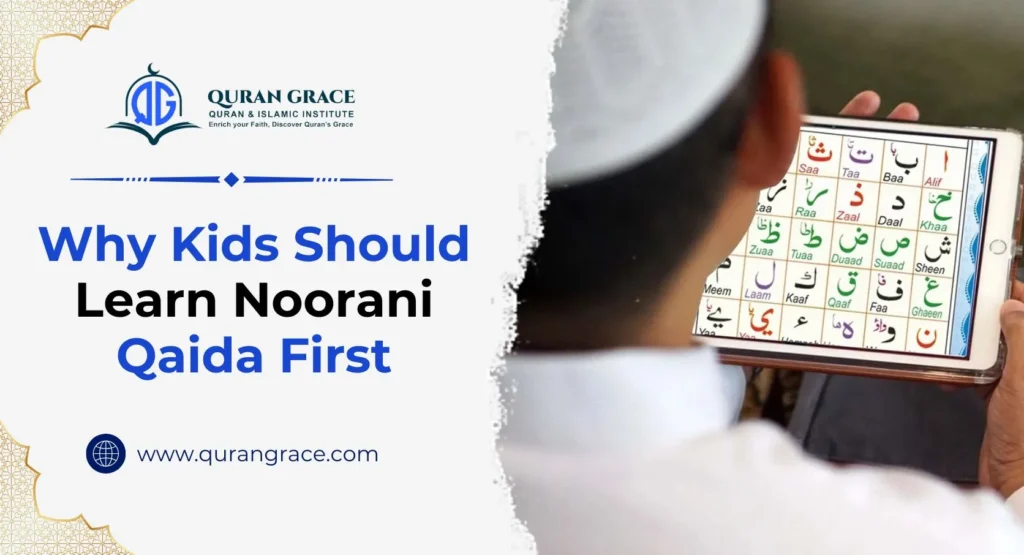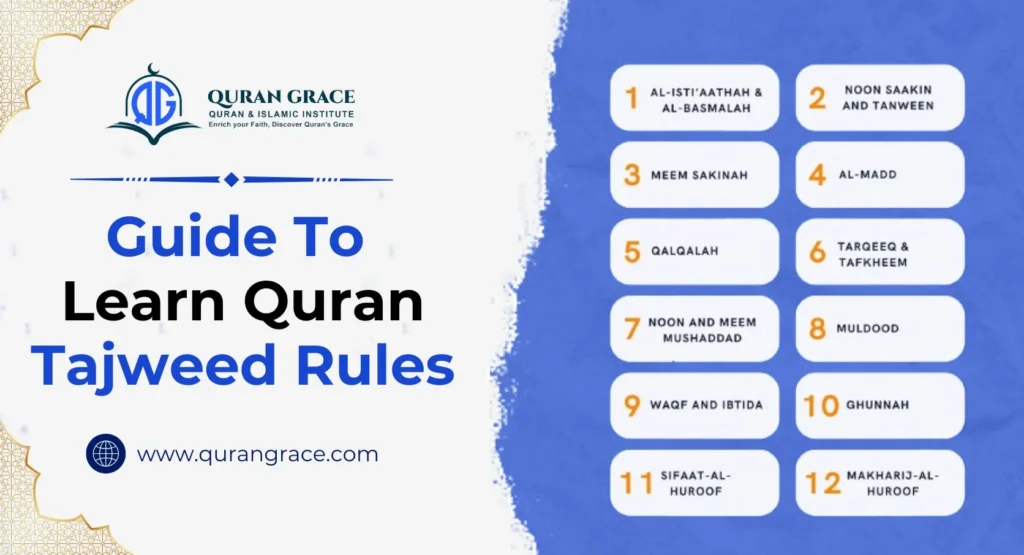Tajweed plays a crucial role in the proper recitation of the Quran. To fully grasp all the Tajweed rules, it’s essential to practice them regularly. One significant rule is Hamzatul Wasl, which requires proper attention and time for mastery. In this discussion, we will explore the intricacies of this rule, supported by examples from the Quran.
Table of Contents
ToggleWhat is Hamzatul Wasl?
Hamza-tul-Wasl, or the Connecting Hamza, is an important sound in Arabic. It appears at the start of some words and looks like a small symbol, called Hamza (ٱ), on top of the letter Alif in Arabic writing. This Hamza helps connect words smoothly when we speak or read.
In simple terms, Hamzat al-Wasl is like a bridge between words in Arabic. It links them together without stopping the flow of speech. You may notice this symbol above certain letters when reading the Quran, showing where to pronounce the Connecting Hamza.
In Arabic, a word can’t start with a Saakin letter. When speakers encounter a word like هْدنا, where the first letter is Saakin, they need a solution. To solve this, the rules of Hamzatul Wasl were created to prevent starting a word with a Saakin letter, changing it to اهْدِنا.
Rules of Hamzatul Wasl
There are different rules for hamzatul easl. Let’s learn and understand them from the professional egyptian quran teacher online of Quran Grace who have learned these rules from their native Egyptian tutor
-
Start of the Word
Hamza-tul-Wasl is an important phonetic feature in the Arabic language that resembles an additional “h” sound at the beginning of certain words. This phenomenon occurs because Arabic typically does not allow words to begin with a consonant sound. You can find Hamzat al-Wasl in various parts of speech, including verbs, nouns, and letters.
-
Position and Usage
Hamzat al-Wasl is located at the start of a word. However, if a vowel precedes it or if the word is connected to the previous one, the Hamzat al-Wasl is not pronounced. The sound that follows depends on the preceding sound. For example, in the word “الرَّجُلُ” (ar-rajulu), the “al” part does not produce the Hamzat al-Wasl sound because it follows a vowel.
-
Appearance and Pronunciation
In written Arabic, Hamzatul Wasl appears as a standard alif (ا). In the Quran, it is distinguished by a diacritical mark placed above the alif (ٱ). When pronouncing a word that contains Hamzat al-Wasl, it is important to vocalize this sound, as in the case of the word “ٱلَّذِينَ” (alladhīna), where the Hamzat al-Wasl is articulated.
-
The Special Case of “Al”
The Arabic article “ال” (al), which translates to “the” in English, is a specific instance of Hamza-tul-Wasl. It is consistently present in speech but not always written out. Despite its absence in writing, it must be pronounced clearly, just like other forms of Hamza-tul-Wasl. For instance, in “الرَّجُلُ” (ar-rajulu), the “al” functions as Hamza-tul-Wasl even though it isn’t visually represented.
Understanding Hamzat al-Wasl is essential for mastering Arabic pronunciation and enhancing communication in the language.
Note: Quran Grace offers an advanced tajweed course specifically designed to teach Tajweed rules with proficiency.
Examples of Hamza Tul Wasl In the Quran
The Quran contains numerous examples of Hamzatul Wasl. Here are some instances where this type of hamza is found:
Example 1
“وَأَمَّا مَن بَخِلَ وَاسْتَغْنَى”
Hamzat al-Wasl appears in the word “استَغْنَى” (istaghna), meaning “he became self-sufficient.” The alif at the beginning of the word does not have a hamza because it is preceded by the conjunction “wa”. The hamza is silent and not pronounced.
Example 2
“فَادْخُلِي فِي عِبَادِي”
Hamza-tul-Wasl is present in the word “فَادْخُلِي” (fadkhuli), meaning “enter”. The alif at the beginning of the word is not written with a hamza because it is preceded by the conjunction “fa”. The hamza is silent and not pronounced.
Conclusion
The rules of Hamza-tul-Wasl pertain to a specific form of the Arabic letter “Hamza,” which has unique characteristics. This type of hamza appears at the start of a word and effectively links it to the preceding word. Grasping these rules is essential for accurate pronunciation and for reciting verses from the Quran. To better understand this concept, you must take a free evaluation class with Quran Grace and enroll in our online Tajweed course. All the significant Tajweed rules are taught with practical examples from the Quran.








